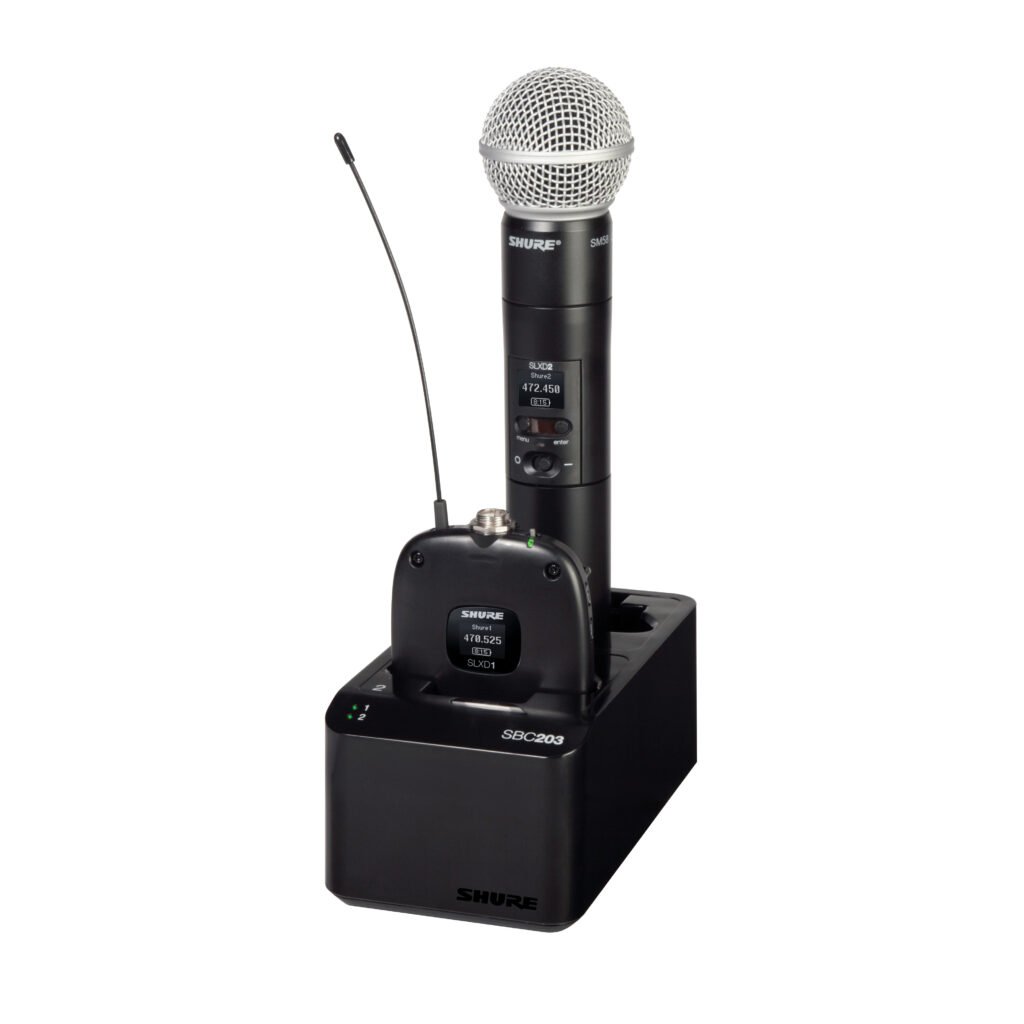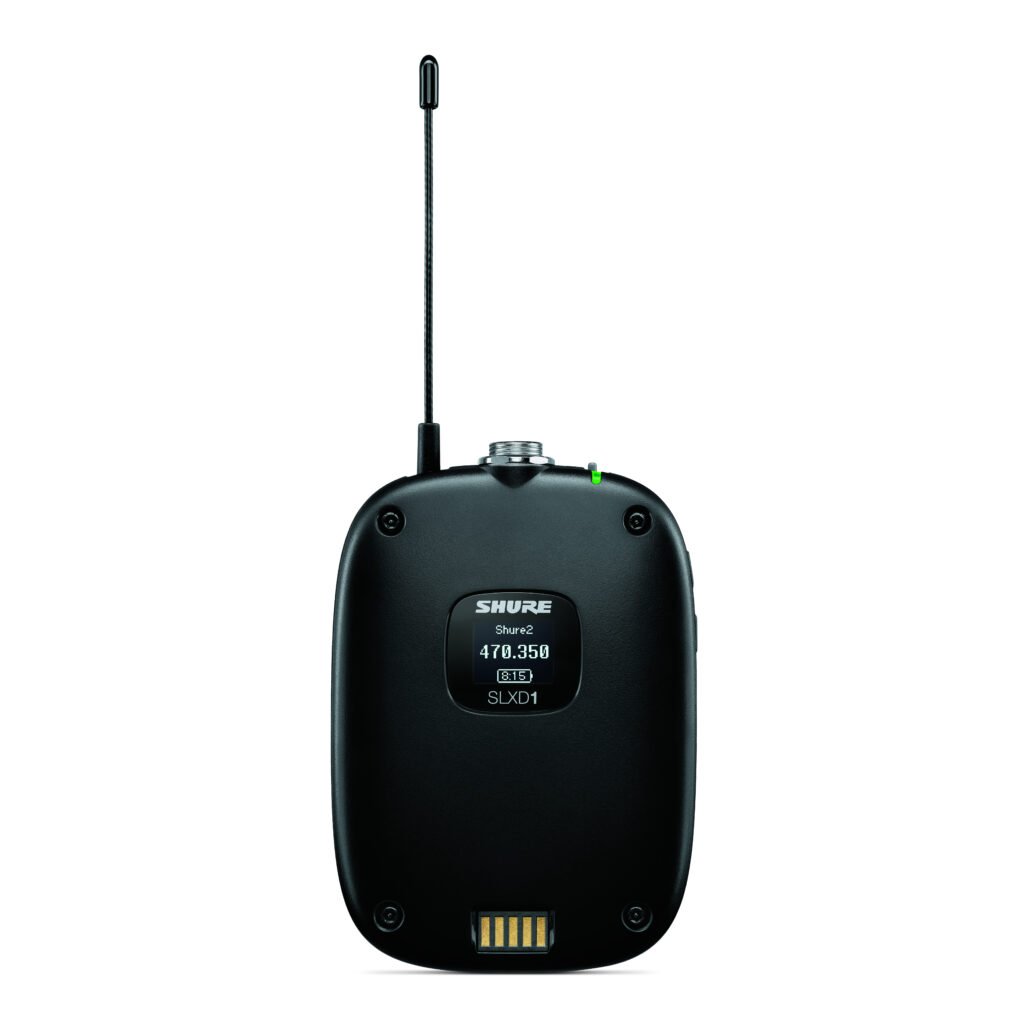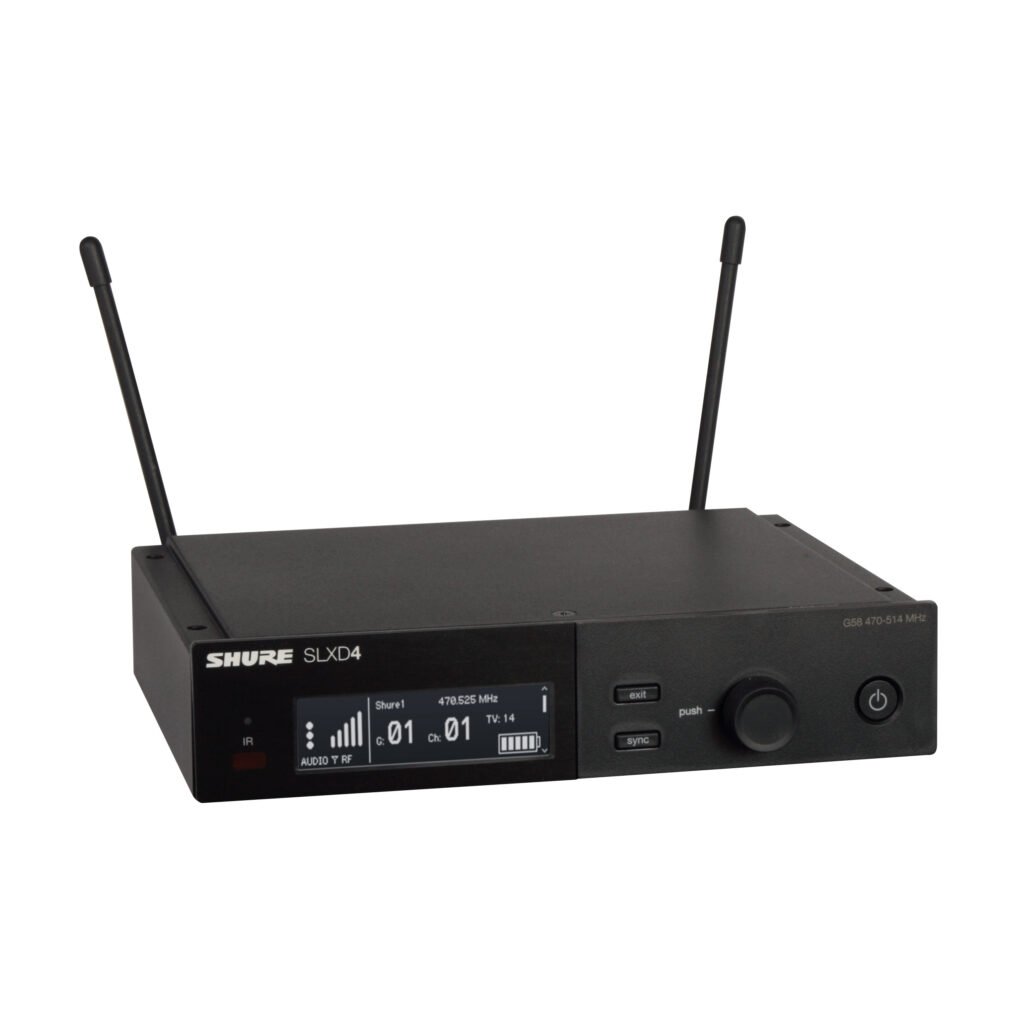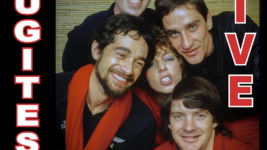News
30 May 2022
Road Test: Shure SLX-D

Subscribe to CX E-News
Duncan Underwood is an audio and IT specialist who has extensive knowledge of both live sound and IT network design and administration. The founder of live streaming and technical services company MyEvent, Duncan uses his wide skill-set to help people live stream their events on the world stage.
MyEvent has purchased two SLXD4D dual channel receivers, two SLXD4 single channel receivers, six SLXD1 bodypack transmitters with lapel mics, six SLXD2/B58 handheld transmitters, and a couple of the SBC203 dual docking recharging stations. Live streaming is MyEvent’s core business, and while audio is very important to us, we couldn’t justify going to the very top end of the wireless range represented by Shure Axient. SLX-D is the perfect blend of features and price-point for our business, and I was pretty impressed with SLX-D’s performance straight away.
Our business requires a radio mic system that is solid and stable, and familiar to our clients. Our handheld transmitters are fitted with Shure Beta58 capsules, which are an industry standard. Our lapel mics are Shure WL185s, which are cardioid and also well-known to our end-users.
Out Of The Box
I was really impressed with the out-of-the-box experience. Without reading the manual, I was up and running in seconds. That doesn’t happen all the time. Working completely off of the front panel of the receivers, I scanned for clean frequencies and interference. Once that was done, I networked the two dual channel units and ran a group scan. It was all so fast, it blew me away. Once I’d found our clean frequencies, I hit OK, and synced the transmitters by holding them in front of the infrared transmitter on the front panel. It was done in seconds.
When you’re doing live streaming, you don’t want to get bogged down with RF issues and wonder why your scan isn’t working or not finding RF issues. SLX-D offers a similar level of RF management and performance to the top-end of the wireless microphone market. You often need to move pretty quick in a live streaming environment, and SLX-D definitely helps you get up and running.
SLX-D is compatible with both Shure’s Wireless Workbench control and monitoring software, and the newer ShurePlus Channels mobile app. I appreciate the options, but we’ve found that the front panel operation is so simple and the results so reliable we haven’t had to get any more in-depth than that. For us, going digital with SLX-D has meant no RF issues, and less time fault-finding and working out frequencies.
Into The Field
We almost always hire out our Shure SLX-D kits without a technician to operate or manage them. The simplicity of the SLX-D interfaces make it easy for the hirer. There’s not too many things they can do with the system that would get them into trouble. We’ve never had to provide tech support over the phone, and never had an issue with any aspect of their operation.
Audio Quality
Half the time on our gigs, there’s a PA in the room, and lapels can be notoriously hard to manage with a live rig. Even comparing our WL185 lapel mics to higher-end product, they’re impressive. As such, we’ve been deploying them as you would any other high-end product. I’ve been told several times by touring audio engineers how great they sound, which is amazing for the price-point.
The SLXD2/B58 handhelds remind me of the higher end Shure ULX-D. They feel the same in my hand, and sound just as good, like a hardwired Beta58. I can’t hear any latency. Overall, I’m very impressed with the build quality. SLX-D has taken the top-end Shure feel and sound and bundled it into an affordable package. I don’t know how Shure have managed it, but I’m grateful for it!
Physical
In both the handhelds and bodypack transmitters, the battery compartments are mercifully free of issues; I’ve found others to be very fiddly. I’ve stress-tested the bodypacks by putting them in my back pocket and sitting down and am happy to report I can’t seem to break them. I like the fact that the transmitters are ‘presenter proof’ – I always lock them after set-up.
Battery
All the data from the battery gets displayed on the receiver’s screen, which is very reassuring. The batteries have a life of approximately eight hours. Our events usually don’t run quite that long, but if they do, they have a break built into them so we can re-battery.
Conclusion
About the only other thing I could want in the SLX-D is native Dante, but that’s what the ULX-D Series above them provides. SLX-D has ticked all the boxes for MyEvent, and we’re looking at getting more to go with the streaming kits we send out.
Product Info: www.shure.com
Distributor Australia: www.jands.com.au
Distributor New Zealand: nsl.co.nz



Shure SLX-D: The Specs
RF
RF Carrier Frequency Range 470–937.5 MHz (varies by region)
Working Range: 100m
RF Tuning Step Size: JB Band: 125 kHz, all other bands: 25 kHz, varies by region
Image Rejection: >70 dB typical
RF Sensitivity: −97 dBm at 10-5 BER
AUDIO
Latency: 3.2 ms
High-Pass/Low Cut Filter: 150 Hz, –12 dB/octave
Audio Frequency Response: 20 Hz–20 kHz (+1, −2 dB)
Audio Dynamic Range A-weighted, 20 Hz–20 kHz, typical: 118 dB @1% THD
Total Harmonic Distortion: <0.02%
Mic Offset Range: 0 to 21 dB (in 3 dB steps)
FEATURES
32 available channels per frequency band (region dependent)
Up to 10 compatible systems per 6MHz TV band; 12 systems per 8 MHz band
Easy pairing of transmitters and receivers over IR scan and sync
Compatible with Shure Wireless Workbench control software
Remote control via ShurePlus Channels mobile app
Up to 8 hours from 2 AA batteries or optional Shure SB903 rechargeable battery
Subscribe
Published monthly since 1991, our famous AV industry magazine is free for download or pay for print. Subscribers also receive CX News, our free weekly email with the latest industry news and jobs.






